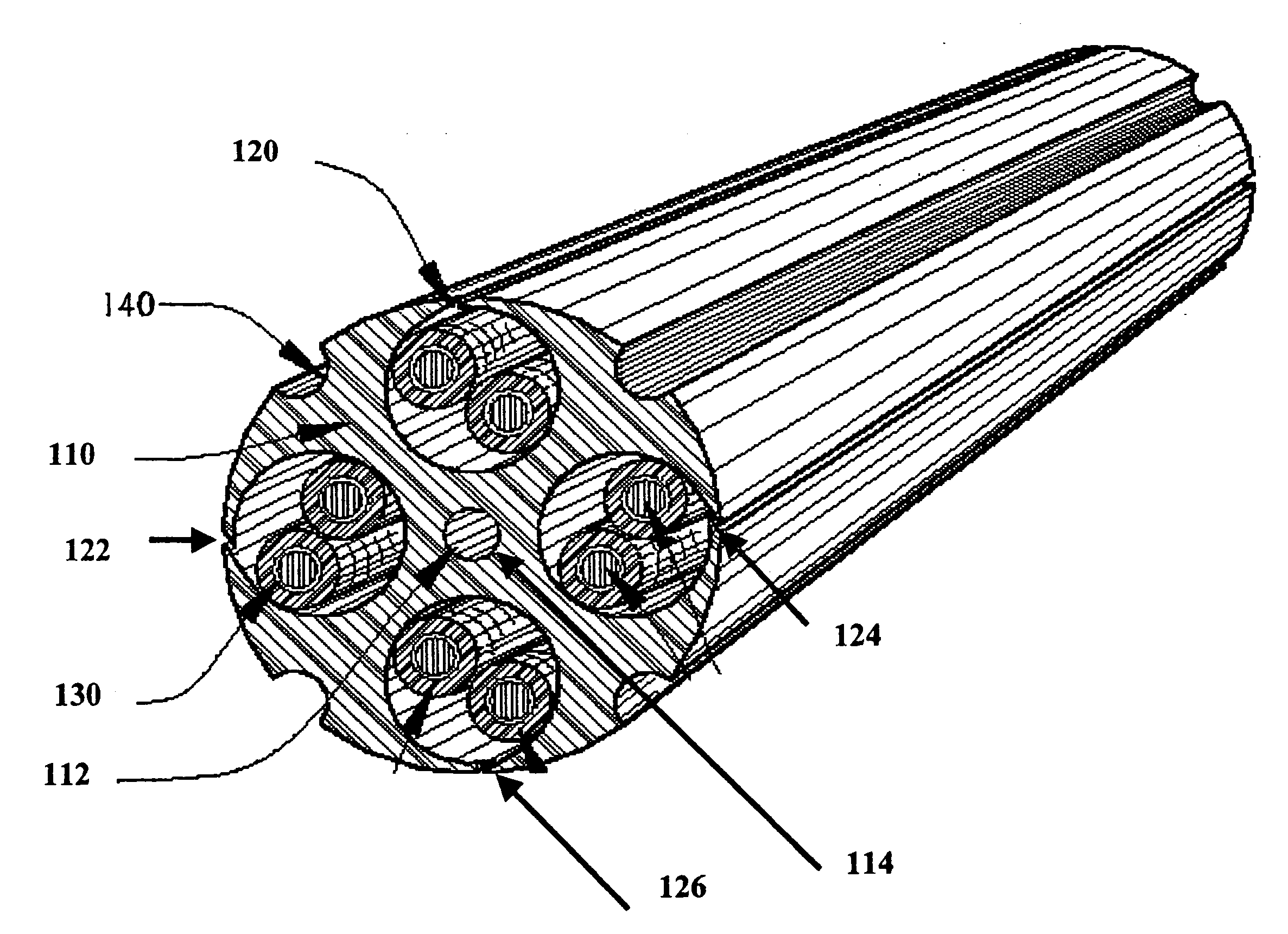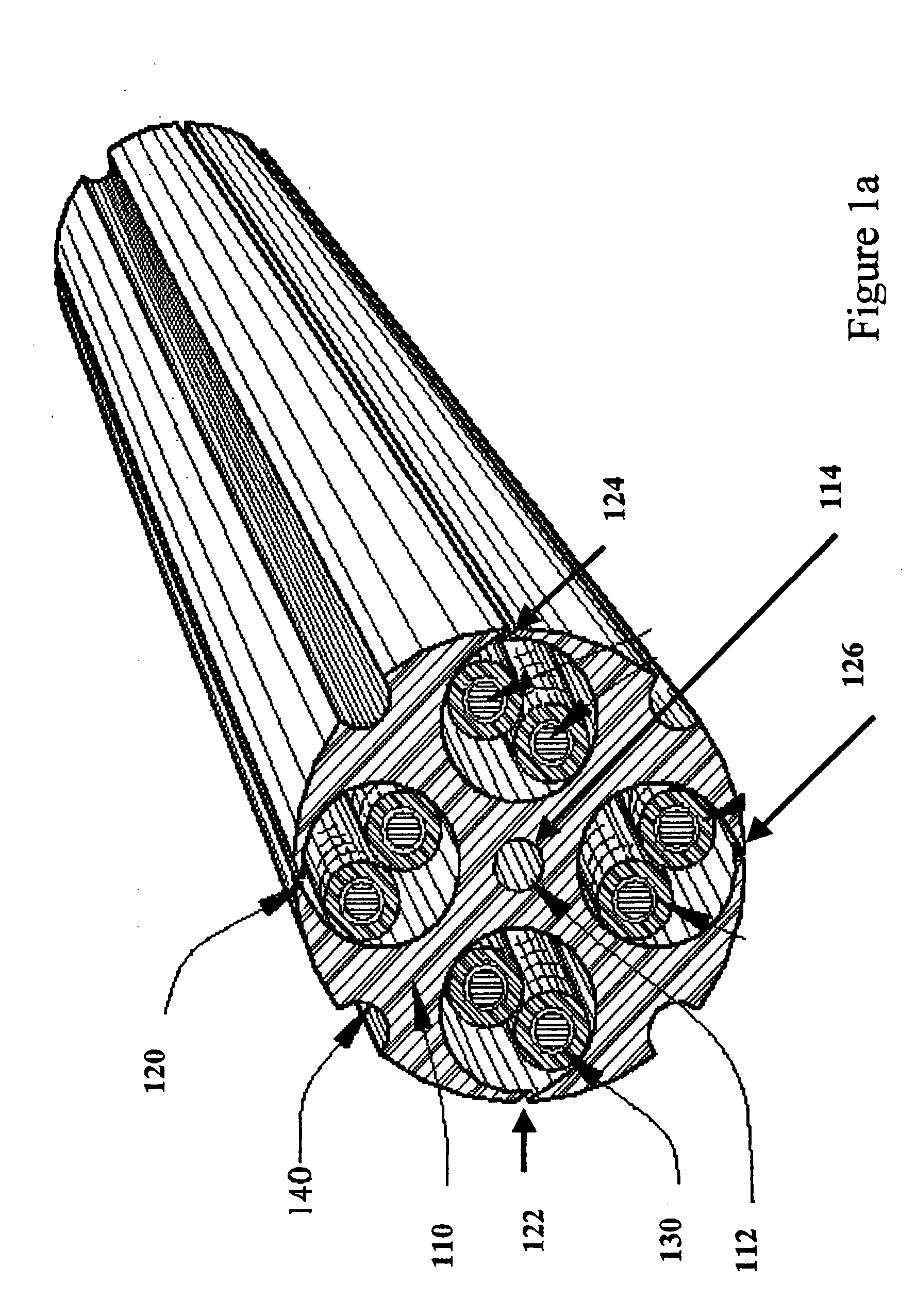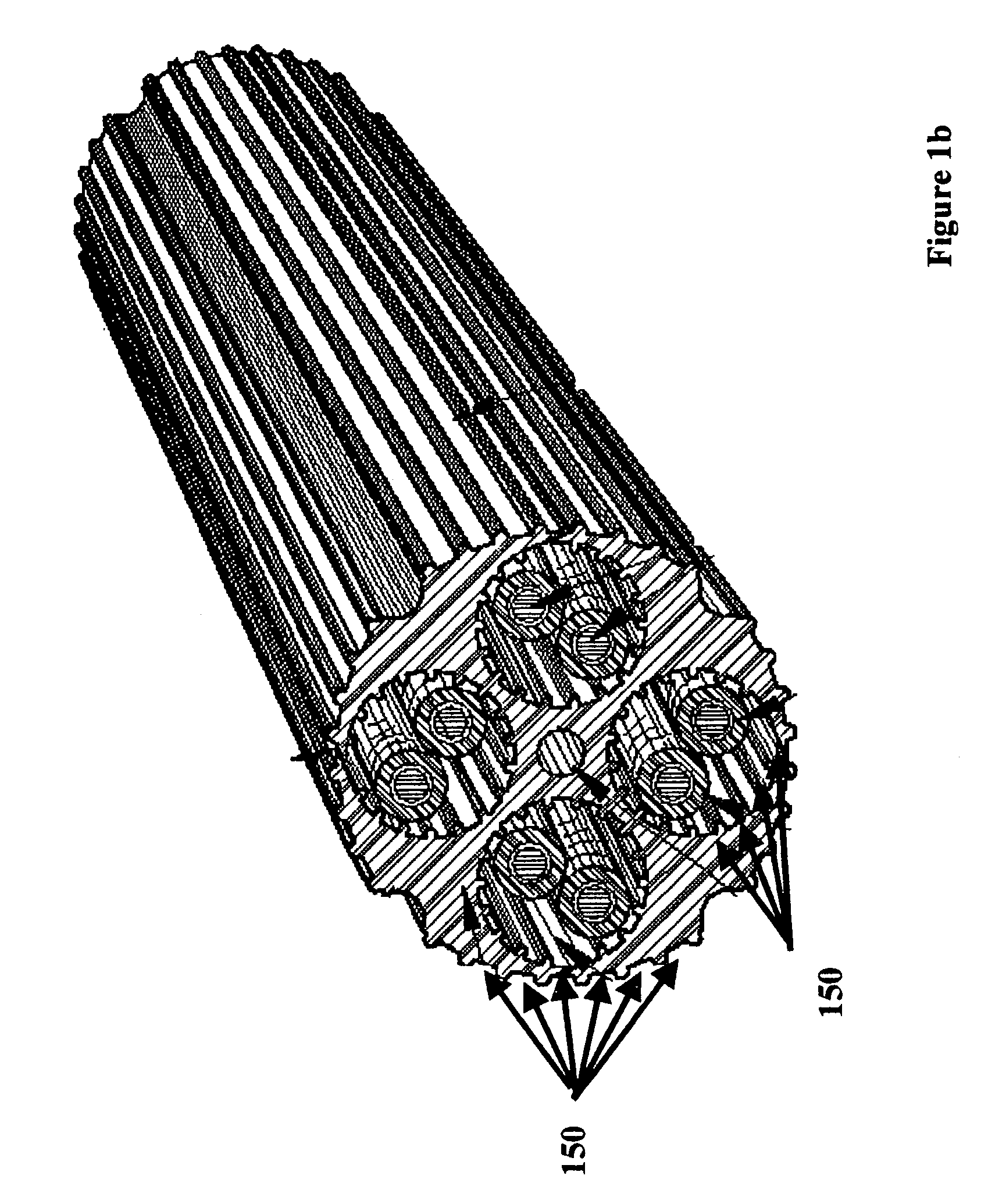High performance support-separators for communications cables
a technology of support and separation, which is applied in the direction of insulated conductors, cables, conductors, etc., can solve the problems of unsatisfactory energy transfer between conductor pairs, increased unwanted cross-talk, and shielded cables, so as to reduce the need for complex, improve the next control, and the effect of easy control
- Summary
- Abstract
- Description
- Claims
- Application Information
AI Technical Summary
Benefits of technology
Problems solved by technology
Method used
Image
Examples
Embodiment Construction
[0087] The following description will further help to explain the inventive features of the cable and the interior support portion of the cable.
[0088]FIG. 1a is a top-right view of one embodiment of this invention. The shown embodiment has an interior support shown as an anvil-shaped separator (110). The interior support anvil-shaped separator, shown in more detail in FIGS. 3 and 4, runs along the longitudinal length on the cable. The interior support anvil-shaped separator, hereinafter, in the detailed description, referred to as the “anvil-shaped separator”, has a central region (112) extending along the longitudinal length of the cable. The center region includes a cavity that runs the length of the separator in which a strength member (114) may be inserted. Channels 120, 122, 124, and 126 extend along the length of the anvil-shaped separator and provide compartments for conductors (130).
[0089] A strength member may be added to the cable. The strength member (114) in the shown ...
PUM
| Property | Measurement | Unit |
|---|---|---|
| frequencies | aaaaa | aaaaa |
| frequencies | aaaaa | aaaaa |
| voltage | aaaaa | aaaaa |
Abstract
Description
Claims
Application Information
 Login to View More
Login to View More - R&D
- Intellectual Property
- Life Sciences
- Materials
- Tech Scout
- Unparalleled Data Quality
- Higher Quality Content
- 60% Fewer Hallucinations
Browse by: Latest US Patents, China's latest patents, Technical Efficacy Thesaurus, Application Domain, Technology Topic, Popular Technical Reports.
© 2025 PatSnap. All rights reserved.Legal|Privacy policy|Modern Slavery Act Transparency Statement|Sitemap|About US| Contact US: help@patsnap.com



